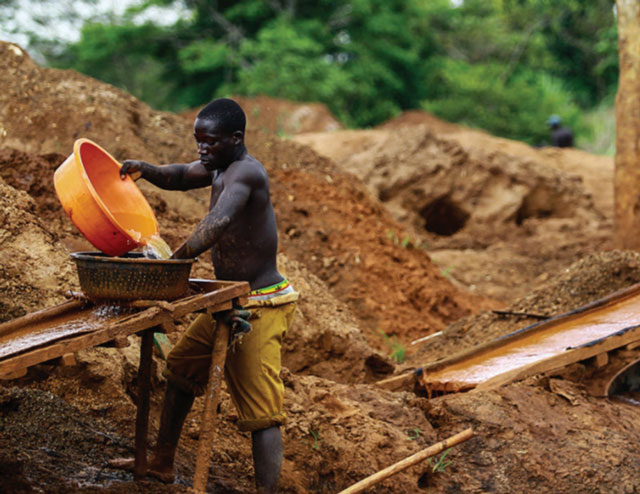
Moroto, Uganda | URN | More than 1000 children in the mining sites of Moroto district are at risk of developing chronic health complications unless proper measures are put in place to stop child labor at mining sites.
A report from a study conducted by Platform for Labor Action in partnership with Ecological Christian Organization (ECO) and Education for Young People in Uganda (Somero) in August 2017 in Moroto and Bugiri districts on child labor shows that 75.3% of the children in the gold mines had chest pain.
The study conducted in 337 households in Moroto, Bugiri and Namayingo districts reached out to 1762 members including 1021 children aged 6-18years. In Rupa Sub County, where the study was conducted, 1036 children dropped out of school last year in preference for gold mining, according to records from the Moroto District Education office.
However, only 162 households in Rupa Sub County which are involved in gold mining were interviewed. “Most injuries suffered as a result of working in gold mines were chest pains (75.3%), extreme fatigue/tiredness (59.2%), eye problems (41.8%) and open wounds (36.5%) with near levels across the study districts” part of the report reads. Other health problems encountered at the gold mines are fractures (9.2%), dislocations, sprains and back pain (33.8%), burns and corrosion scalds (12.6%), breathing problems (33.8%) and stomach problems (26.1%).
While some health conditions are caused by lack of protective gears at work, others are due to the heavy workload. In Moroto, 81% of the children in gold mines carried heavy loads that were burdening and beyond their abilities. The heavy tools mentioned include hammers, grinding machines, iron rods and pick axes among others. Bugiri had only 48.4% in the same category.
At Lolung new gold mining site in Rupa Sub County, children as young as one year live with their parents at the site full of dust, noise and child unfriendly environment. The site has no clean water, health facility, school or any protective gears for workers.
One of the teens running the sand grinding machine, says he resorted to the mining site to fend for his family. “My parents live a miserable life and so are my brothers and sisters. We survive on residue of local brew (adakai) and kwete. But since I came here, I am now able to make at least some UGX 15000 in a week for their upkeep at home. My other brother (9 years) joined me and he’s able to help me do some work here” Angella (not real name) narrated.
Dr. Alfred Francis Ogwang, the acting Director Moroto Regional Referral Hospital, says chest pain and fatigue in children may lead to recurrent chest infection and chronic airway obstructive diseases if not well managed. He notes that the said health complications at the mines can be treated if discovered early.
Although a number of children stand high health risks at the mines, only about two percent of those interviewed were willing to abandon the gold mines. Most of the children and families in Rupa Sub County derive their livelihoods at the mines since it doesn’t require educational competence.
With an enrolment of 24.6% in schools across the district, less than five percent of school going age children in Rupa, Katikekile and Tapac sub counties- which command major mining activities are at school.
The report also indicates that there are other negative social impacts beyond the poor health and education outcomes. They include among others an increase in cases of indiscipline among children, early and unwanted pregnancies and increased social conflicts.
But Andrew Keem Napaja, the Moroto District LC V Chairperson is hopeful that the issue of children at the mines can be addressed when The Education Ordinance is out.
“We are aware of the situation but our first target is to get these children to school and that can’t only work effectively with the district education ordinance. Some of the children are forced to mines because of poverty at home” Napaja said in an interview.
During the launch of Nuyok and Apolou USAID program last week in Moroto, John Byabagambi, the Minister for Karamoja Affairs directed security agencies and the local leadership to ensure that no child is found at the mining site.
 The Independent Uganda: You get the Truth we Pay the Price
The Independent Uganda: You get the Truth we Pay the Price


